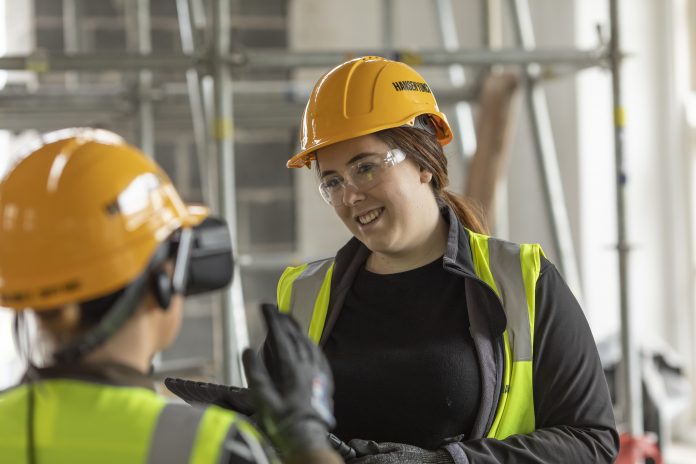
For many, the focus right now is on staying operational but even when the pandemic passes, it’s unlikely that we will return to the old ways of working. Mike Pettinella, EMEA director of Autodesk Construction Solutions, says embracing digital transformation can boost productivity right now, and benefit firms in the long term
The outbreak of Covid-19 has significantly changed the way that construction firms operate. Some firms retained workers on site and continued with essential works to keep vital parts of the UK’s infrastructure running. However, as the restrictions tightened, many projects came to a standstill – with construction businesses facing the almost unprecedented task of enabling a workforce largely restricted to staying in their homes.
But the disruption can also be an opportunity to consider streamlining processes and adopting digital technology. Digital transformation can not only create a healthier and more productive working environment right now, but also help establish long-lasting improvements that will benefit the firm post-pandemic.
With an incremental approach that combines technology and culture, businesses can lay the foundations for a productive, resilient organisation in the future.
The current state of digital in construction
Most construction businesses have been aware of the importance of digital technology for some time. However, technology adoption has been progressing slowly in UK firms, according to research conducted just prior to the outbreak. Construction professionals at one in five firms say that their projects are entirely paper-based (19%). Meanwhile, only a small proportion of businesses use paperless technology for three-quarters or more of their projects (13%).
In turn, the technology in place had been causing inefficiencies in many businesses. A quarter of construction professionals say that transferring data between IT systems was one of the biggest time wasters in the business, while only 7% use a single system to manage the whole construction process. With remote working becoming the new normal, adopting more streamlined digital processes and new working practices can facilitate improved information-sharing in dispersed teams and enable stronger collaboration.
The right culture
Remote collaboration presents challenges beyond the technology. Workers can feel isolated or disconnected, and it’s very hard to separate personal lives from professional lives when you’re working from your kitchen. Establishing new virtual working norms for the team can be an important step for helping people to adapt to the current circumstances and use technology productively in future.
It can help to define good practice, such as using video on conference calls by default, to support active listening; encouraging employees to signal when they’re going offline; and promoting patience with each other’s new working environments – screaming toddlers, home schooling demands, barking dogs and all.
The frequency of communication should increase to maintain good relationships – both within the business and with collaborators and clients. Sharing updates regularly will build transparency and trust, as well as enabling people to support each other with challenges outside the workplace. Overall, creating a positive, supportive working culture will help teams to get through this period, but it can also set the tone for a more caring, engaging workplace in the future.
A single source of truth
Using technology is critical for working remotely, but when employees are separated it can actually increase the risk of miscommunication and inefficiency. All construction businesses are aware of the pitfalls of different teams using different versions of documents or data – and those risks increase significantly when no one is in the same place.
Establishing a single source of truth using cloud-based technologies can keep everyone on task and working productively. Team members can work from the same documents in real time, with version tracking to manage the information, while on-page comments enable rapid communication.
When everyone has visibility of the information they need and the work completed, there can be greater trust between employees and managers. Importantly, this approach can also improve collaboration with clients and partners in other organisations to better manage all relationships in the supply chain.
A digital-first mindset
Many construction organisations are focusing on the tools that will keep the business operating right now. But once we’ve come through this pandemic, it’s unlikely that we’ll ever return completely to the old way of working – even in the construction sector. Considering digital transformation as a means of optimising the business in the long term will help teams to achieve lasting benefits.
There are ways to ensure that the changes made now can be scaled across the business. Focusing on cloud-based solutions means that new users can be added easily at a later stage. Meanwhile, choosing digital tools that can easily integrate with other platforms will ensure that technology doesn’t introduce new siloes between systems and with clients or collaborators.
Creating a repeatable digital service blueprint will help to ensure that different teams deploy digital processes in the same way across the organisation. Setting out best practice also ensures that processes are standardised and people use tools in the most productive way possible.
In the long term, technology brings the most benefit if you can think ahead and create a strategic digital roadmap that’s integrated into the overall business plan. Consider how technology can work as a competitive differentiator by boosting productivity, improving client relationships or delivering exceptional builds. By thinking about digital processes as a means of optimising the whole business, rather than a short-term fix, construction firms can set themselves up for future success.
Thriving post-pandemic
Adopting digital technologies now will build resilience into the business to cope with the current period of disruption and further challenges further down the line. But digital can also help to improve other areas of business performance post-pandemic, whether that’s building lasting client relationships or minimising rework caused by outdated information.
The current situation in the construction sector appears incredibly difficult and, understandably in many cases, the priority is staying operational. There is an opportunity for firms to take this time to build resilience into the business and foster greater productivity, with a focus on new technology and new processes. This is a huge professional and personal challenge for everyone, but we can take the time to plan for a brighter future.
Mike Pettinella
EMEA director
Autodesk Construction Solutions
Twitter: @autodesk
LinkedIn: Autodesk
Youtube: Autodesk

















Nice Article! The coronavirus has had unprecedented impacts on the world — and the worst is yet to come. Companies must act today if they are to bounce back in the future. Doing so will help the world as a whole recover — and, we hope, become more resilient in the process.